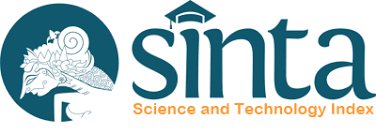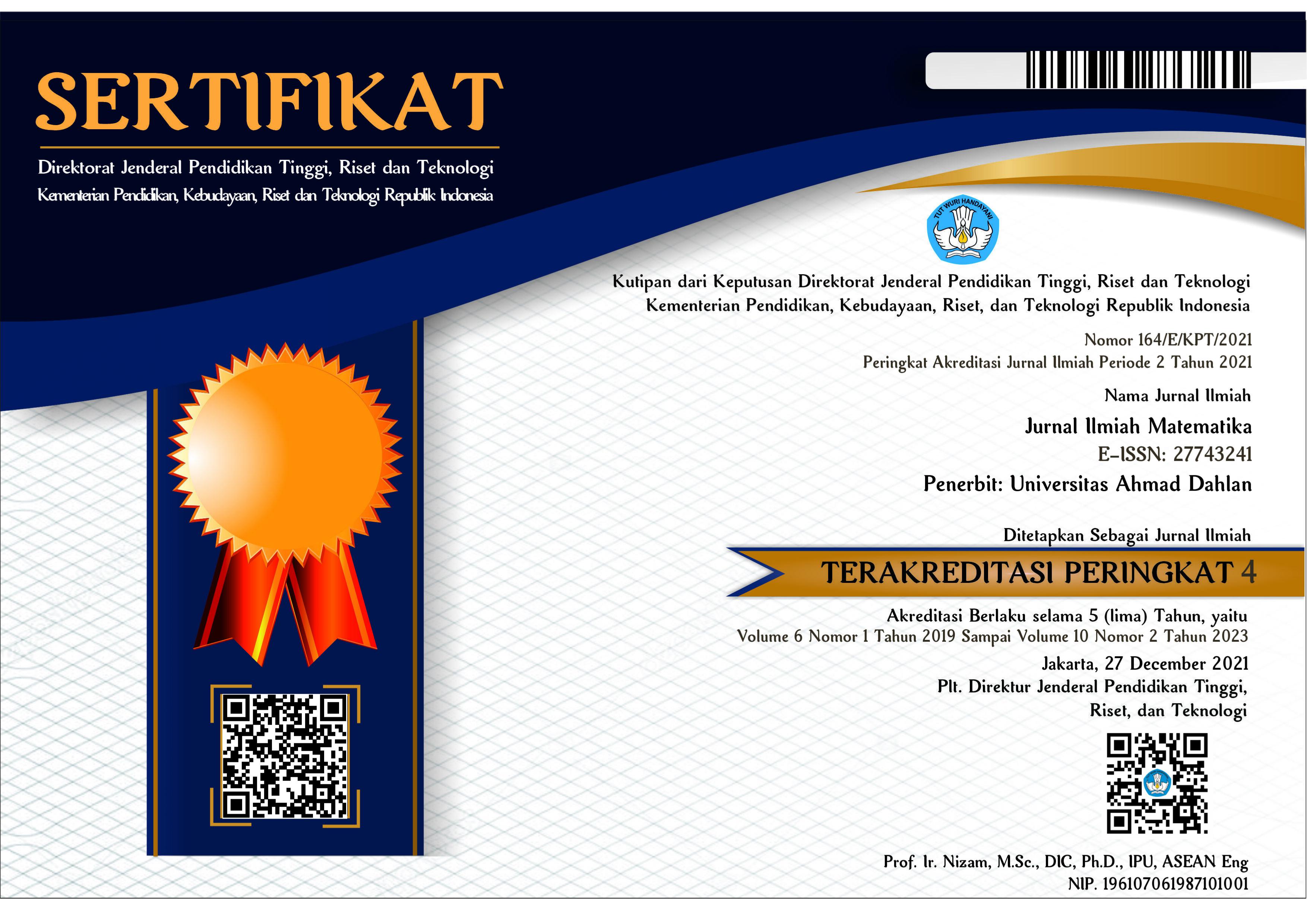Model matematika terapi kanker dengan viroterapi
DOI:
https://doi.org/10.26555/konvergensi.v7i1.19538Keywords:
Model matematika, Viroterapi, Onkolitik, Persamma diferensial, Kestabilan, Titik ekuilibriumAbstract
Model merupakan penyederhanaan fenomena-fenomena nyata dalam bentuk matematika. Salah satunya adalah model matematika pada terapi kanker dengan virus oncolytic atau yang disebut viroterapi. Viroterapi merupakan terapi kanker yang menggunakan virus sebagai terapinya. Virus yang digunakan yaitu virus onkolitik. Sistem persamaan dalam penelitian ini menggunakan sistem persamaan diferensial nonlinier dengan melibatkan tiga variabel yaitu sel tumor tidak terinfeksi x(t), sel tumor terinfeksi y(t), dan partikel virus bebas v(t). Kemudian dilakukan analisis model matematika yang meliputi titik ekuilibrium, kestabilan di sekitar titik ekuilibrium, dan simulasi numerik. Analisis kestabilan dilakukan untuk mempelajari kedinamikan suatu system dengan tujuan menyelidiki jenis kestabilan dari titik-titik ekuilibrium pada setiap variabel dalam model, sehingga dapat diketahui kapan mencapai titik keseimbangan (ekuilibrium). Hasil penelitian menunjukkan terdapat tiga titik ekuilibrium pada model matematika viroterapi yaitu E0(0; 0; 0), E1(K; 0; 0) dan E2. Dari model yang dibahas ukuran ledakan virus, selektivitas virus dari virus onkolitik dan ukuran tumor maksimum akan menentukan hasil dari viroterapi. Ini bermakna secara biologis. Semakin besar tumor, semakin banyak virus kuat diperlukan untuk melawannya.References
W. E. Boyce, R. C. DiPrima, and D. B. Meade, Elementary differential equations. John Wiley & Sons, 2017.
Ž. Bajzer, T. Carr, K. Josić, S. J. Russell, and D. Dingli, “Modeling of cancer virotherapy with recombinant measles viruses,†J. Theor. Biol., vol. 252, no. 1, pp. 109–122, 2008.
A. Friedman and C.-Y. Kao, Mathematical modeling of biological processes. Springer, 2014.
S. Kusmaryanto, Matematika Teknik I. Universitas Brawijaya Press, 2013.
F. R. Giordano, M. D. Weir, and W. P. Fox, “Mathematical modeling,†Thomson-Brookes/Cole, 2003.
R. Haberman, Mathematical models: mechanical vibrations, population dynamics, and traffic flow. SIAM, 1998.
D. Ruelle, Elements of differentiable dynamics and bifurcation theory. Elsevier, 2014.
A. E. Laaroussi, M. El Hia, M. Rachik, E. Benlahmar, and Z. Rachik, “Analysis of a mathematical model for treatment of cancer with oncolytic virotherapy,†Appl. Math. Sci, vol. 8, pp. 929–940, 2014.
D. Dingli, M. D. Cascino, K. Josić, S. J. Russell, and Ž. Bajzer, “Mathematical modeling of cancer radiovirotherapy,†Math. Biosci., vol. 199, no. 1, pp. 55–78, 2006.
J. P. Tian, “The replicability of oncolytic virus: defining conditions in tumor virotherapy,†Math. Biosci. Eng., vol. 8, no. 3, p. 841, 2011.
H. Anton, P. Silaban, and I. N. Susila, Aljabar Linear Elementer. Erlangga, Jakarta, 1987.
L. Perko, “Linear systems,†in Differential Equations and Dynamical Systems, Springer, 1991, pp. 1–63.
M. Braun and M. Golubitsky, Differential equations and their applications, vol. 1. Springer, 1983.
A. Tsoularis and J. Wallace, “Analysis of logistic growth models,†Math. Biosci., vol. 179, no. 1, pp. 21–55, 2002.
Downloads
Published
Issue
Section
License
Authors who publish with this journal agree to the following terms:
1. Authors retain copyright and grant the journal right of first publication with the work simultaneously licensed under a Creative Commons Attribution License that allows others to share the work with an acknowledgment of the work's authorship and initial publication in this journal.
2. Authors are able to enter into separate, additional contractual arrangements for the non-exclusive distribution of the journal's published version of the work (e.g., post it to an institutional repository or publish it in a book), with an acknowledgment of its initial publication in this journal.
3. Authors are permitted and encouraged to post their work online (e.g., in institutional repositories or on their website) prior to and during the submission process, as it can lead to productive exchanges, as well as earlier and greater citation of published work.

This work is licensed under a Creative Commons Attribution-ShareAlike 2.0 Generic License.









